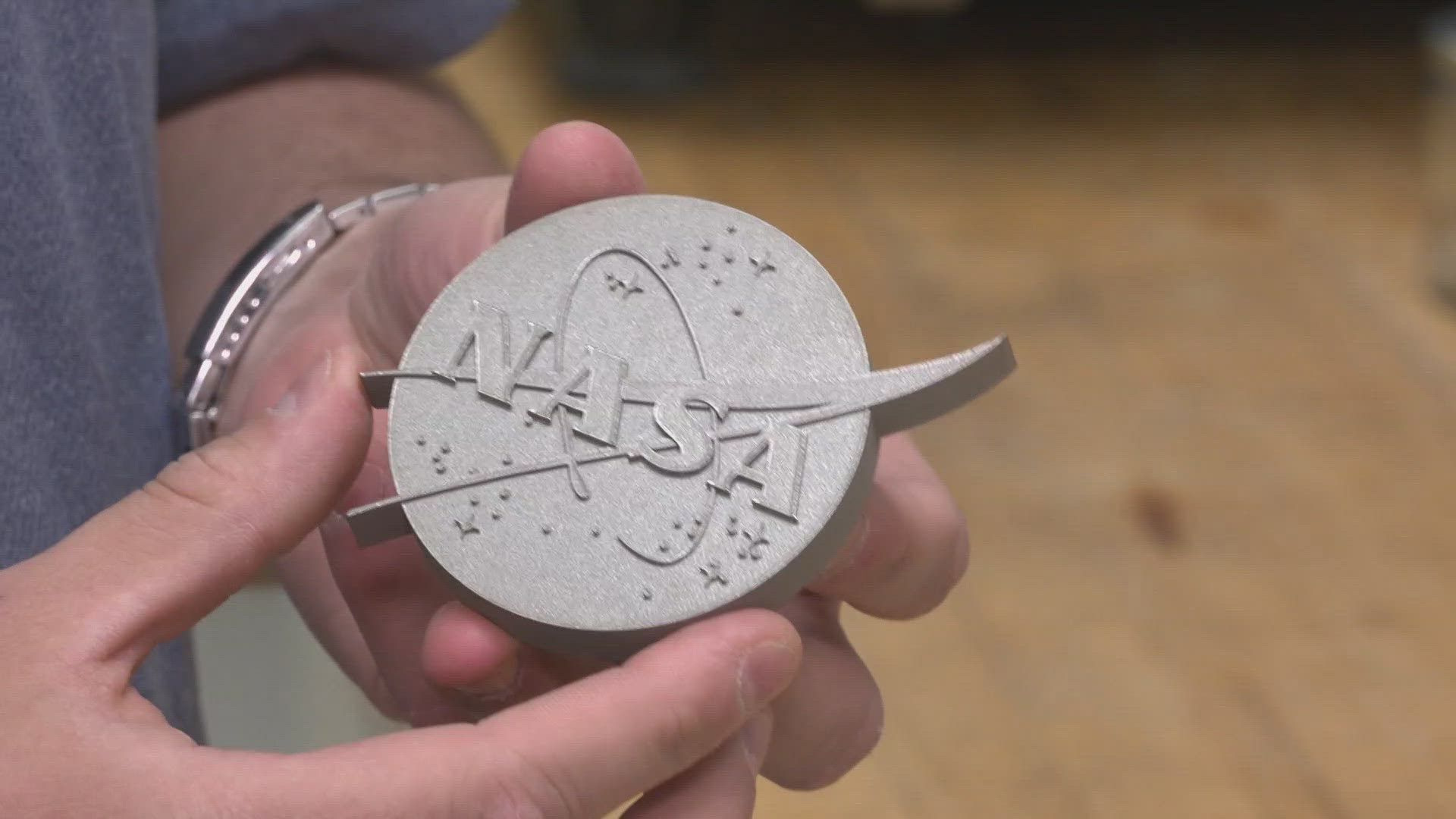CLEVELAND — NASA Glenn engineers Chirs Kantzos and Tim Smith can now call themselves inventors, too.
They are the minds behind NASA's breakthrough material, a superalloy developed for extreme conditions of air and spaceflight. It's called GRX-810.
"In a rocket engine, you can go from 0 to 1000 or 2000 degrees within a couple of seconds," Kantzos, a research engineer, said. "So we need a material that's robust and reusable, and that's one of the big selling points for GRX-810 is it can stand many reuses."
Parts begin as metal powder inside a 3D printer. A laser melts the extremely thin layers together and, slowly, a part is formed.
The true test is heat, but temperatures that would cause other alloys to fail are no problem for GRX-810, making it ideal for stronger, more durable parts in rocket and airplane engines.
The secret? The metal powder is coated with a ceramic before it is printed. This happens at a nano-scale level — particles so small they use sound waves to get the correct mixture, and to see them, they need an electron microscope.
"Every time we put a new sample in here, we see something that no one has ever really seen before," Smith, a materials researcher, told 3News. "You know, we're looking at new compositions, new alloys, and every time when you get these type of magnification, you see something new."
"This has the potential to generate billions in economic activity in the United States," Amy Hiltabidel, licensing manager for the NASA Glenn Research Center, stated.
Four U.S. companies have already licensed the new technology.
"NASA is always working ten, 15, 20 years ahead of industry," Hiltabidel explained, "so it's rare when we have this perfect storm of a cutting-edge technology and industry demand and having manufacturers ready to license of manufacture."
For Kantzos and Smith, they'll spend the rest of their careers working with, testing, and understanding the properties of the alloy they invented.
"It's exciting," Smith said. "If I could go back and talk to 5-year-old me, he would be pretty pumped to hear that, you know, we got to invent something."

